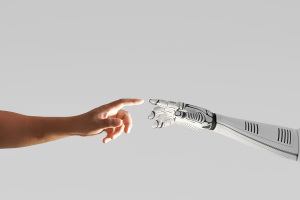The Illogic of Homosexual Unions
Why Homosexual Behavior Is More like Consensual Incest and Polyamory than Race or Gender - Part 3
In Part 2 I dealt with how the disproportionately high rates of measurable harms attending homosexual activity point to the structural discordance of homoerotic unions.
Can the problem of structural discordance be alleviated if one of the same-sex partners tries to play the role of the other sex through gender nonconforming behavior? Not likely. A man cannot fake being a true sexual complement to another man and a woman cannot fake being a true sexual complement to another woman. The symptoms of higher incidences of sex partners over life, of sexually transmitted infections, of sexual unions of shorter duration, and of mental health complications are just that: symptoms of a root problem. The root problem is too much embodied identity between the participants, similar to the root problem for incest of even an adult-committed sort.
Even when homosexual unions "beat the odds" and don't exhibit most of the normal harms associated with homosexual activity, they-like occasional adult-incestuous or adult-polyamorous unions that "beat the odds" by exhibiting loving commitment with few scientifically-measurable negative side-effects-still suffer from the root problem of too much formal or structural identity between the participants.
Since there are two and only two primary sexes-even the existence of "intersexuality" among a miniscule percentage of the population merely draws on features of the two primary sexes-it is axiomatic that each sex, male and female, is only half of an integrated sexual whole. The beauty of a committed male-female sexual union is that it brings together in harmony the two complementary sexes, thereby moderating sexual extremes, filling in sexual gaps, and honoring the individual integrity of one partner's maleness and the other partner's femaleness. In a heterosexual union what a man brings to the table, so to speak, is his essential maleness. What he does not bring is essential femaleness; that is supplied by the woman. Likewise, the woman brings to the sexual table her essential femaleness; what she lacks in essential maleness is supplied by man. Two sexual halves unite to form a complete sexual whole.
Incidentally, that is why Genesis 2:18-20 refers to woman with the expression "as his counterpart" or "complement," Hebrew kĕnegdô, where the component word neged denotes both similarity corresponding to (i.e. similarity on the human level) and difference opposite (i.e. difference as regards a distinct sex extracted from him). That is why the story of Genesis 2:21-24 presents the image of two sexes emerging from one flesh (illustrating the point of sexual complements) as the basis for the two sexes, man and woman, reuniting into "one flesh." By its very nature sexual intercourse was designed for sexual complements or counterparts.
If in a heterosexual union two sexual halves unite to constitute a sexual whole, the logic of a homosexual union, by analogy, is that two half-males unite to form a single whole male; or two half-female unite to form a single whole female. A half unites sexually with its complementary half. To regard one's self, if male, as completed sexually by another male is to make an implicit statement that one does not regard one's particular gender as being intact apart from such a union. The same goes for a female-female sexual union. This is both sexual self-deception (one's maleness or femaleness is already intact) and sexual narcissism (one is erotically aroused by one's own essential sex).
That is why the apostle Paul in Romans 1:24-27 refers to homosexual acts as intrinsically "dishonoring" for the participants, even when the relationship is conducted in the context of care and commitment. Similarly, most would acknowledge the dishonoring character of an adult-committed incestuous bond, which tries to make of "one flesh" two persons who in terms of kinship are already of the same flesh.
I believe that the arguments presented in Parts 1, 2, and 3 make a strong positive case for seeing closer correspondences between homosexuality and incest or polyamory than between homosexuality and race or gender. However, there are counterarguments that must be addressed. I will deal with these in a Part 4.
For Part 1: The Initial Case go here.
For Part 2: What Disproportionately High Rates of Harm Mean go here.




























